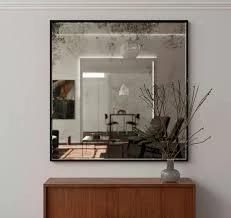

Understanding Float Glass Types
Float glass, a fundamental material in the construction and manufacturing industries, is renowned for its clarity, flatness, and versatility. The process of creating float glass involves floating molten glass on top of molten tin, leading to uniform thickness and a smooth surface. This method, invented in the 1950s, revolutionized glass production and laid the groundwork for various types of float glass, each designed to serve specific purposes and meet diverse architectural and industrial needs.
Types of Float Glass
1. Clear Float Glass The most common type, clear float glass is characterized by its high transparency and minimal distortion. It allows for maximum light transmission and is often used in windows, doors, and facades. It typically has a greenish tint due to the iron content in the raw materials, but this is usually unnoticeable in thin sheets.
2. Low-iron Float Glass For applications where a significantly higher level of clarity is critical, low-iron float glass is the preferred choice. This type has reduced iron content, resulting in almost colorless transparency. It’s ideal for high-end architectural projects, glass railings, and showcases where aesthetic appeal is paramount.
3. Tinted Float Glass Tinted float glass is produced by adding metal oxides during the melting process, which imparts color. Common tints include bronze, gray, and green. This type not only adds visual interest but also provides solar control by reducing glare and heat transfer. Tinted glass is often used in commercial buildings where energy efficiency and appearance are both priorities.

4. Reflective Float Glass Similar to tinted glass, reflective float glass incorporates a metallic coating on one side to enhance its reflective properties. It minimizes solar heat gain while improving privacy by reflecting external light. This is commonly used in high-rise buildings, allowing occupants to enjoy views without compromising their privacy.
5. Laminated Float Glass Often used for safety and security applications, laminated float glass consists of two or more glass panes fused together with a tough interlayer, typically made of polyvinyl butyral (PVB). This configuration ensures that, in the event of breakage, the glass shards adhere to the interlayer, reducing the risk of injury. Laminated glass is widely used in skylights, glass facades, and automobile windshields.
6. Tempered Float Glass This type of glass undergoes a heating and rapid cooling process, which increases its strength. Tempered glass is four to five times stronger than standard float glass and, upon breaking, shatters into small, blunt pieces rather than sharp shards, making it a safer option. Use cases include shower doors, glass doors and tables, and building facades.
7. Insulated Float Glass Comprising two or more panes sealed together, insulated float glass creates an energy-efficient barrier. The space between the panes is often filled with argon gas to reduce thermal transfer. This type of glass is increasingly sought after in residential and commercial constructions to enhance energy efficiency and comfort.
Conclusion
With an array of options available, understanding the different types of float glass is crucial in selecting the right material for a specific application. Whether it involves improving aesthetics, enhancing energy efficiency, or ensuring safety, float glass plays an integral role in modern architecture and design. As technology progresses, we can anticipate even more innovative glass types emerging, further expanding the possibilities for designers, builders, and consumers alike. Through the right choice of float glass types, we can create spaces that are not only functional but also visually stunning.